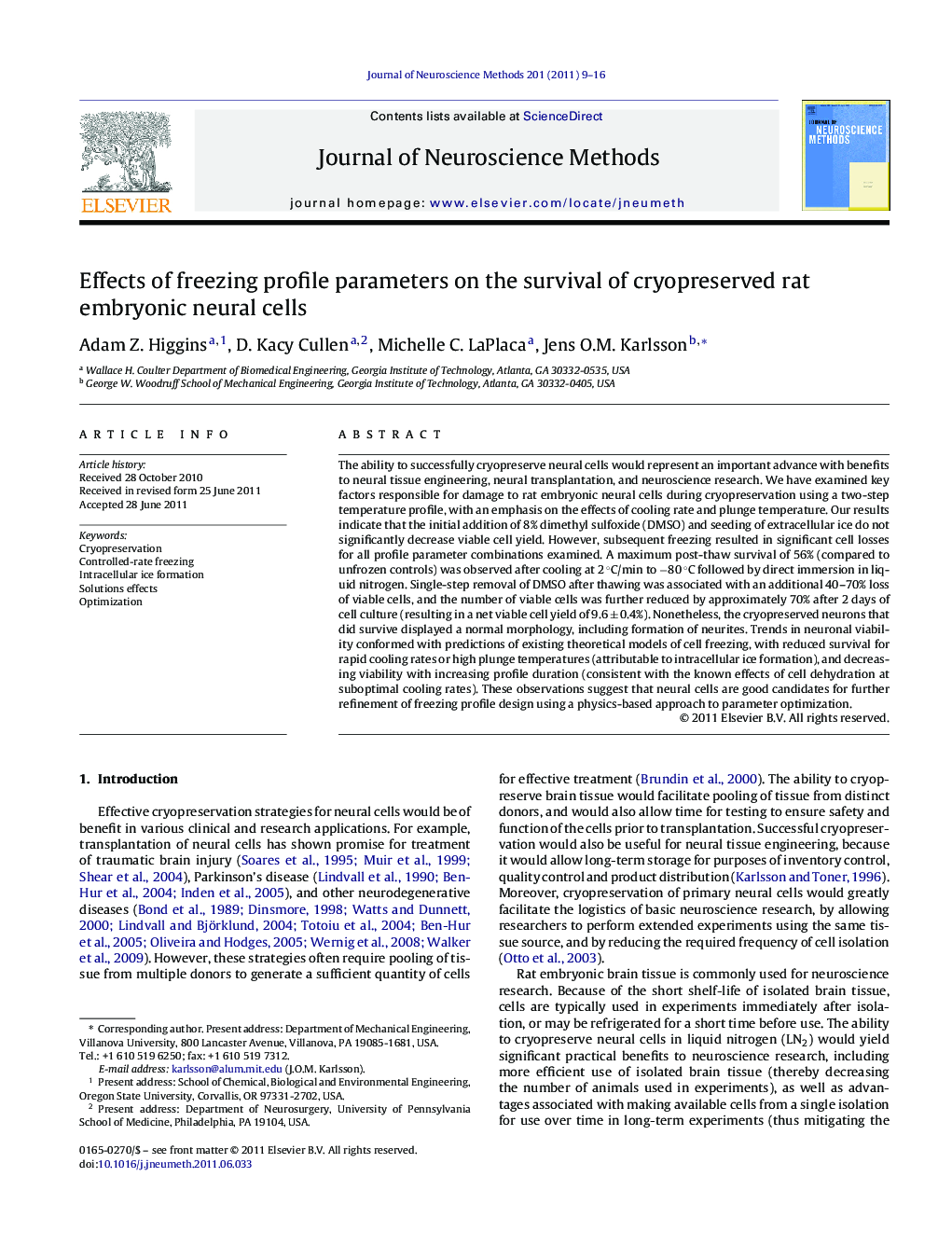| Article ID | Journal | Published Year | Pages | File Type |
|---|---|---|---|---|
| 6269588 | Journal of Neuroscience Methods | 2011 | 8 Pages |
The ability to successfully cryopreserve neural cells would represent an important advance with benefits to neural tissue engineering, neural transplantation, and neuroscience research. We have examined key factors responsible for damage to rat embryonic neural cells during cryopreservation using a two-step temperature profile, with an emphasis on the effects of cooling rate and plunge temperature. Our results indicate that the initial addition of 8% dimethyl sulfoxide (DMSO) and seeding of extracellular ice do not significantly decrease viable cell yield. However, subsequent freezing resulted in significant cell losses for all profile parameter combinations examined. A maximum post-thaw survival of 56% (compared to unfrozen controls) was observed after cooling at 2 °C/min to â80 °C followed by direct immersion in liquid nitrogen. Single-step removal of DMSO after thawing was associated with an additional 40-70% loss of viable cells, and the number of viable cells was further reduced by approximately 70% after 2 days of cell culture (resulting in a net viable cell yield of 9.6 ± 0.4%). Nonetheless, the cryopreserved neurons that did survive displayed a normal morphology, including formation of neurites. Trends in neuronal viability conformed with predictions of existing theoretical models of cell freezing, with reduced survival for rapid cooling rates or high plunge temperatures (attributable to intracellular ice formation), and decreasing viability with increasing profile duration (consistent with the known effects of cell dehydration at suboptimal cooling rates). These observations suggest that neural cells are good candidates for further refinement of freezing profile design using a physics-based approach to parameter optimization.
⺠Rat embryonic neural cells were cryopreserved using 8% (v/v) dimethyl sulfoxide. ⺠Cooling at a rate of 2 °C/min from â5 °C to â80 °C produced optimal results. ⺠After thawing from liquid nitrogen, viable cell yield was 56% of unfrozen controls. ⺠Losses during cryoprotectant elution and 2-day culture resulted in net yield of 10%. ⺠Cryopreserved cells that were viable in culture had normal neuronal morphology.
